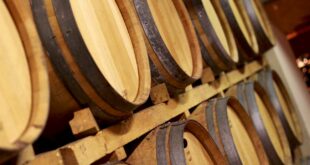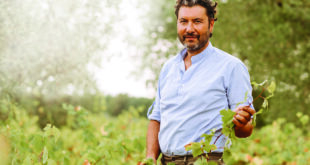Anyone lucky enough to have been to an island paradise knows just how special it feels. There’s a certain quality of light, the sensation of warm sea breezes on the face, and scents of flowers in the air. Time can seem to slow down a bit, encouraging us to just lie back in that hammock and doze the day away.
In the context of island paradises, we’re far more predisposed to imagine tropical drinks with paper umbrellas in them than we are to think about wine, but truthfully, some of the world’s most interesting, compelling, and uniquely delicious wines in the world come from islands.
Wines grown on islands almost always have special qualities. Whether they are raised on fiery volcanos, windswept archipelagos, tropical paradises, or stony sea outcrops, island wines are some of the most unique wines in the world. They often feature little-known grapes grown in places that are so far off the beaten path you have to take a boat to get there.
I was recently asked to present a seminar at the Taste of Vail wine and food festival in Colorado. Amid that snowy paradise, I opted to share six bottles that demonstrate the magic of island wines.
Chapter One: Armageddon, Santorini
Most people have heard of Krakatoa, the cataclysmic 19th-century volcanic eruption that all but obliterated the island of the same name. Well, that eruption was child’s play compared to the 15th-Century-BCE detonation that left behind the little slivers of land that are now the Greek archipelago of Santorini.
At least 6 and perhaps as many as 8 or 10 times more powerful than the Krakatoa eruption, the force of the Santorini detonation is estimated to have been two or three times larger than Hiroshima and Nagasaki… combined. The resulting shockwave triggered tsunamis throughout the Mediterranean that may have been more than 500 feet high, wiping out a huge swath of the Minoan civilization then occupying Crete and other islands in the region, in the process potentially giving rise to the myth of Atlantis.
The tiny bits of land left behind from this cataclysm consist almost entirely of volcanic ash and rubble, but not only have they been resettled, they have become one of the world’s great tourist destinations, and unbeknownst to some, one of the world’s great wine regions. Santorini receives a scant 12 inches (297mm) of rain per year, but somehow manages to grow some truly delicious tomatoes and some truly outstanding wine grapes, both of which quest deeply into the endless ash and pumice for moisture and minerals.
This lack of moisture, combined with the brutally incessant winds on the island, has given rise to a unique method of vine training called the kouloura, in which the canes of the grapevine are continually trained into a basket shape that rests directly on the ground and shelters the bunches of grapes from the elements.

From a distance, the vineyards of Santorini look more like abandoned lots taken over by bushy weeds, but they are in fact, painstakingly tended by hand, as mechanization is utterly impossible with this type of viticulture. The grapes grown are predominantly white, dominated by the Assyrtiko variety, but include as many as 23 other varieties, many indigenous to the island.
Santorini’s white wines, raised in the deep volcanic ash and whipped by the ocean winds have an intense saline minerality and stony purity that makes them utterly refreshing and at the same time mysteriously profound. In particular, as they age, the wines get saltier and richer, transforming in the way that a great Riesling can blossom into something close to ambrosia.
Like many families on Santorini, the Sigalas family had long grown grapes for their own winemaking purposes, but in 1991, mathematician Paris Sigalas decided to turn the family tradition into a fully commercial enterprise and founded Domaine Sigalas, which has become not only one of the best producers on the island but in all of Greece.
The Sigalas…
Source : https://www.vinography.com/2024/04/island-wines-a-seminar



